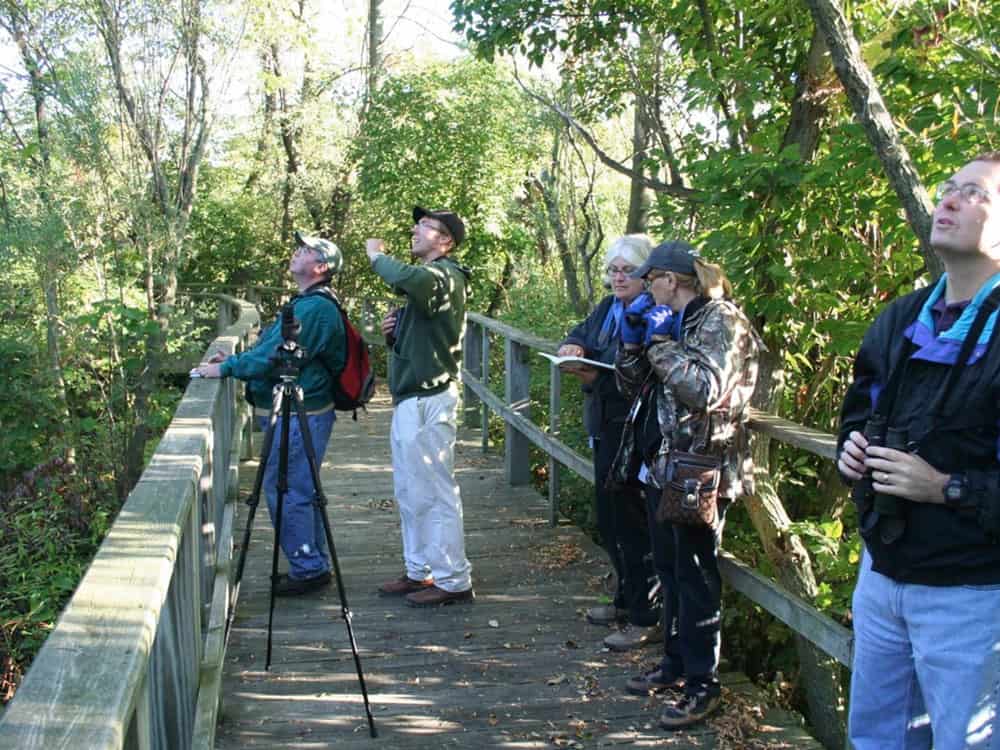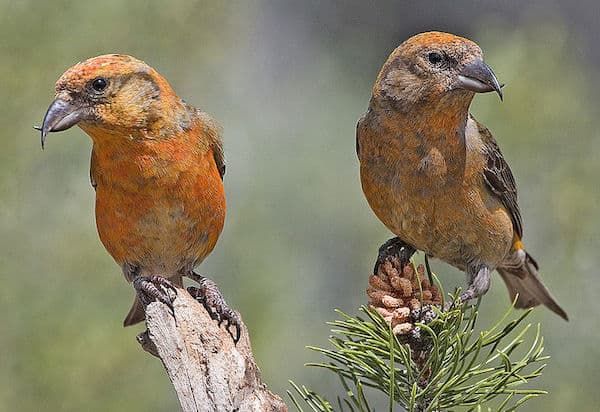These rocks on the North Lookout again, the long view out along the ridge, from which direction the hawks will come. When they come. Today is hot and windless, and the rule of thumb on Hawk Mountain is, “No wind, no hawks.” Too, it is the middle of August. Our part of the world (Pennsylvania) is still impenetrably green, though I have noticed a few openings in the maples around my house, and a falling back of the shoulder-high grass along the meadow stream not far from where I live.
Farther north, though, notice has been given. There the light has changed, with subtle fluctuations of temperature, a wind over flight feathers, nests abandoned.
Last night my wife and daughter and I watched t he Showers of Perseus. Beyond us in the dark, our neighbor ‘s cows coughed, clink of neck chains, heavy movement in the night. Something about the air, the sound of the stream against the riprap behind our little house. The wind.
Still a month, though, until the great broadwing flights that Michael Harwood described in his fine book, The View from Hawk Mountain. “Even at two miles, I can see there are hundreds and hundreds of birds out there—a storm of broadwings. They rise slowly out of the haze, and the leaders do not wait long to set. They start toward us, four, six, ten abreast, and pass directly over our heads . . .from the tops of the trees, back to the crest of the ridge. In the east, the column of hawks streams toward the west—two miles of hawks. For several minutes there is no end to them.”
Even without the hawks, there is no end to the presence and power of this place: the mountain ash trees, their brilliant red berries not yet part of this landscape, the view toward the Little Schuylkill River, the voles slipping in and out of the rocks. I look off toward Pinnacle Point or Owls’ Head, the Kettle. The Appalachian Trail leaves one ridge to the south and crosses the valley past Eckville, toward the other ridge, winding and climbing for miles.
“Different places have different vital effluence, different vitality, different chemical enhalation, different polarity with different stars; call it what you like. But the spirit of place is a great reality.” D. H. Lawrence. And the poet Seamus Heaney refers to “chthonic forces,” the “energies welling up from a place.”
I brush my hand over the Kittatinny sandstone. Sometimes this early in August, even on a hot, windless day, an eagle will come through. My binoculars are heavy and unfamiliar in my hands, my eyes resist such a compression of distance as I play them back and forth along the horizon. There are only the ever present turkey vultures, with their wobbly flight, their small bodies hanging in the V of their wings. The dihedral, the bird people say.
In a month, these rocks will be crowded with people in L.L. Bean boots, parkas, anoraks, sunglasses. They will sit on air cushions or folded red and black wool blankets. They will tell jokes, eat cold chicken. The spirits of this place go into hiding. This August day, though, only one other person and I share the lookout. We talk some about our best moments up here. The bitter cold afternoon in late November when I was alone and a solitary golden eagle flew over, turned a few circles over me, then continued south. The morning he was here when 2,000 birds, mostly sharp-shinned hawks, came over in a few hours. We enjoy the stories, the easy solitude, we drink our coffee or tea, settle ourselves into the rocks for a nap. The sun feels good. Dangerous, we are told these days, but good.
Degree by degree, the season changes. Coming up Copperhead Trail, I noticed beneath a laurel, two Indian pipes, ghostly, sagging some. And the asters have begun turning up along the blacktop roads winding mazelike through the Pennsylvania Dutch farmland. Soon the water will turn over. Two or three days ago, at the comer of my eye, light fell in such a way through t he maples t ha t for a moment I thought it was snow drifting over the grass.
Sometimes the hawks come in, literally, below the thick scrub growth on the mountain, sometimes so high, the naked eye cannot see them. They pass over l like a kind of weather. Sometimes we see them along the flank of the mountain, so that we have to look down to see them. Or up they’ll shoot from the Kettle, on the south side of the lookout.
For me, Hawk Mountain in autumn is a settling in, a getting ready for change, making my peace once more with life’s flow. When the migration is underway, I have the feeling of being in the middle of some magnificent ruin that has, miraculously, begun to teem with life. I’ll worry some about the passing of yet another year, that I have not done what I wanted to do, but mostly I will slip back into instinct, go “far far back in the mind,” as the poet Theodore Roethke says. Wind. Rocks. The notion of a great journey underway by all of us. We have it in us to make our own migration.
Just a hint of all this, this hot afternoon. I walk to the flat rock under which I have seen rattlesnakes in other years. It is cool and shadowy in there, and empty.
On my way home, I stop at a friend ‘s rambling stone farmhouse for some trout flies. I tell him I have been up the mountain. He looks at me. Checks the wind. We have a beer, make some fishing plans. He has just planted string beans. Mentally checking the calendar I look at him. “Only takes 50 days. Lots of time,” he says. “Lots of time.”




